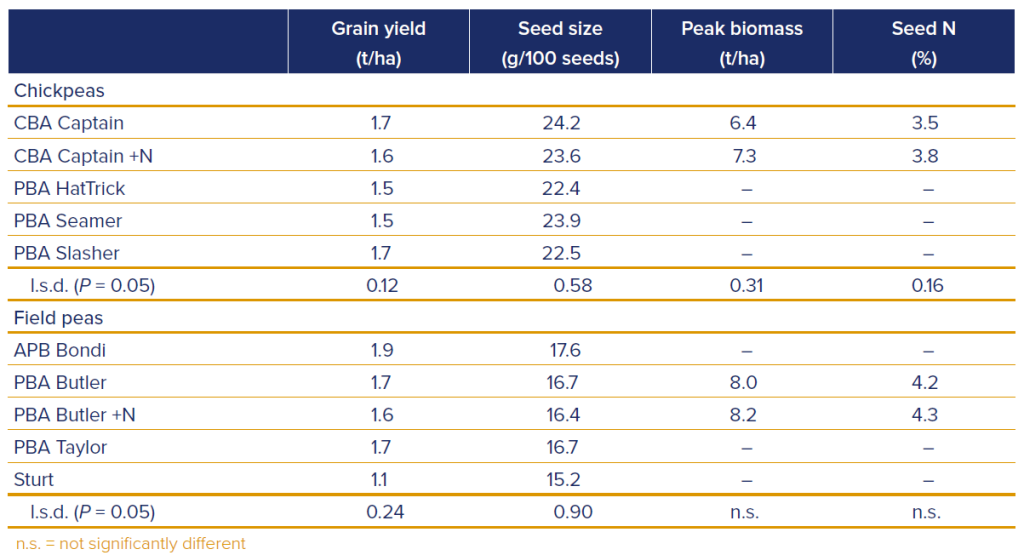Background
The Caragabal site is characterised by a soil with a silty loam topsoil overlying clay at depth. The trials were sown into good seedbed moisture and a full moisture profile after a wet 2022 and good rains in March 2023. The season turned very dry from mid-July with 40 mm total rainfall recorded from then until mid-October. There were several days in September with maximum temperature above 30 °C. Winter growth was excellent and crops set up high yield potential (especially early sown lupins and faba beans) but terminal heat and moisture stress limited grain yield.
Rainfall and temperature
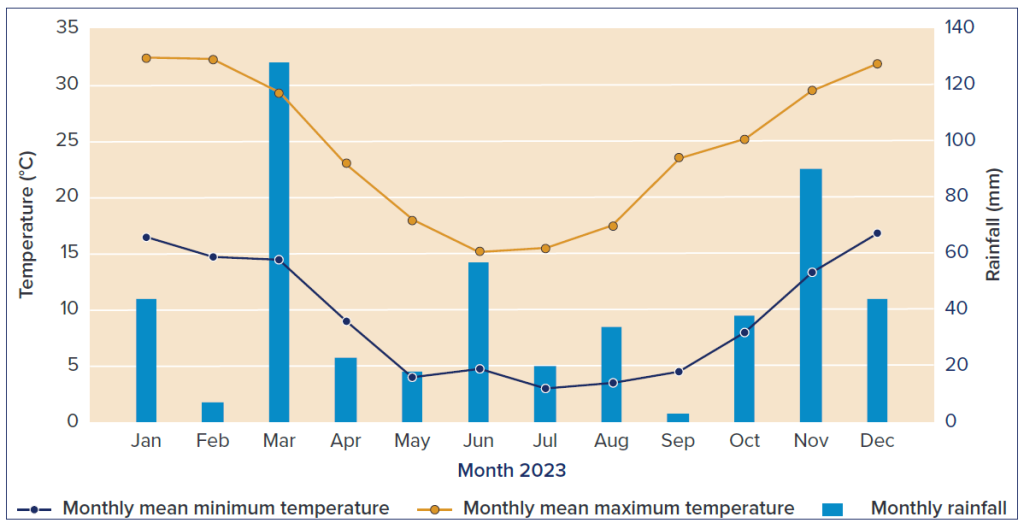
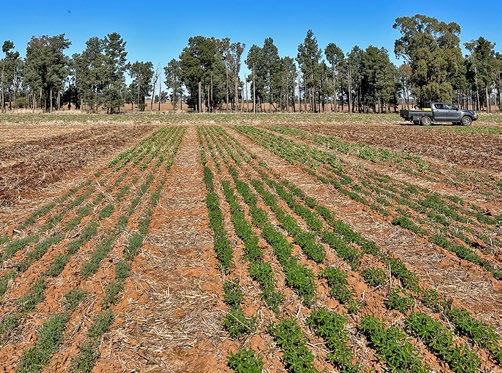
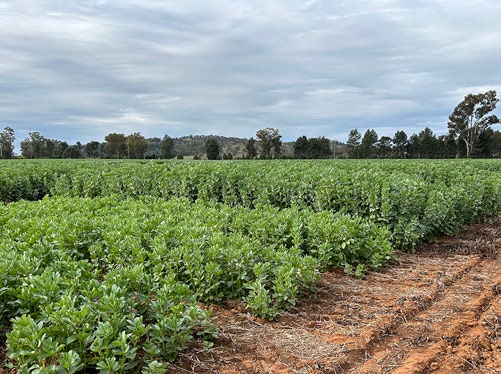
Soil Characteristics
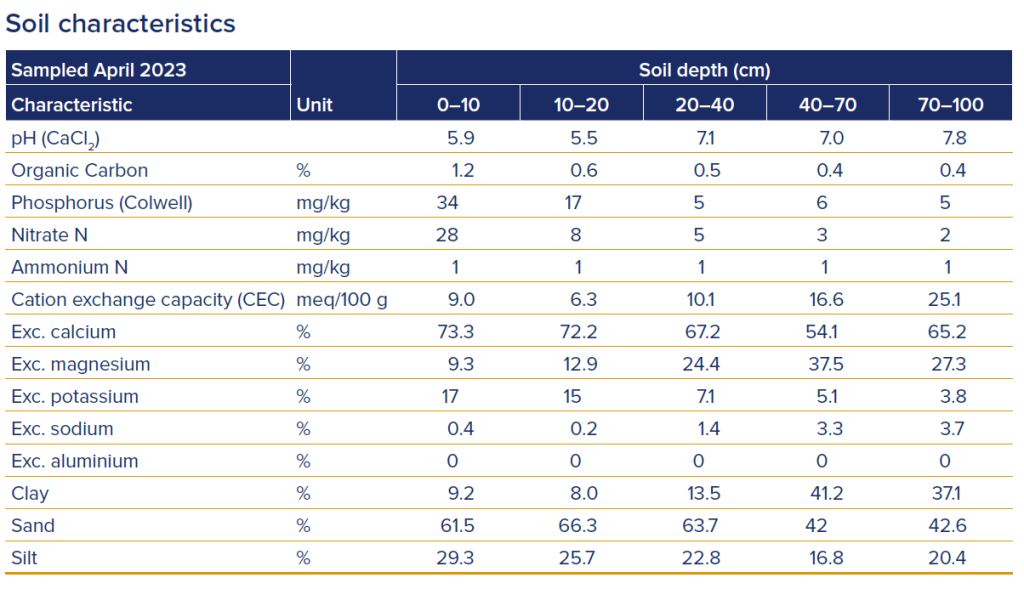
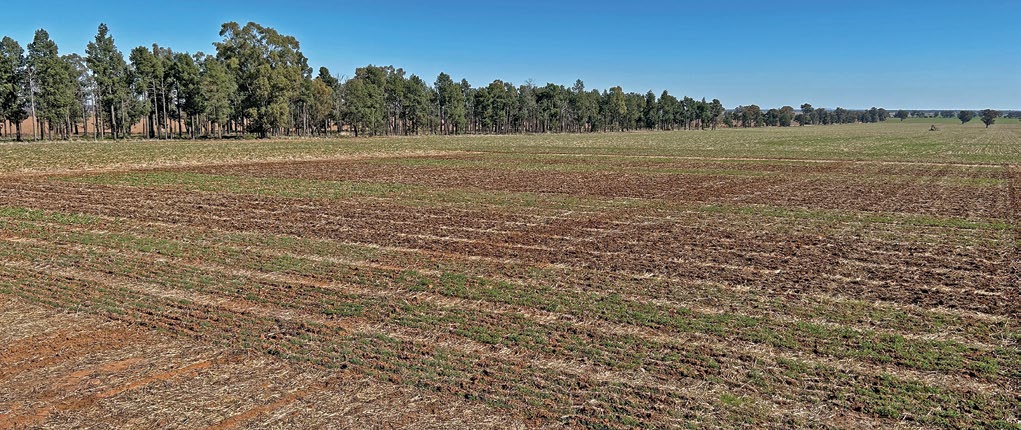

Key findings
Faba beans
- FBA AylaA and PBA NasmaA grain yield (2.85 t/ha) from 19 April sowing date (SD1) was approximately double the yield of PBA SamiraA and PBA AmberleyA (1.45 t/ha). Yield of FBA AylaA and PBA SamiraA dropped to 1.95 t/ha when sowing was delayed to 19 May (SD2), while PBA AmberleyA yielded 0.2 t/ha less at the later sowing date and PBA SamiraA yield was not affected.
- Peak biomass was assessed in PBA NasmaA and PBA SamiraA, with further analysis for nitrogen fixation to be completed. PBA NasmaA biomass at SD1 was 12.4 t/ha and PBA SamiraA was 10.1 t/ha. Biomass of both varieties dropped to an average 7.2 t/ha at SD2.
- Seed size is a varietal characteristic with increasing size from the smallest, FBA AylaA, then PBA NasmaA, and PBA SamiraA and PBA AmberleyA grouped as the largest. In general, the higher yielding varieties had smaller seed. Averaged across sowing date FBA AylaA and PBA NasmaA averaged 50.5 and 56.7 g/100 seeds, respectively, while PBA SamiraA averaged 63.3 g/100 seeds. PBA AmberleyA from SD1 was 76.9 g/100 seeds and SD2 was 69.6 g/100 seeds.
- FBA AylaA and PBA NasmaA maintained seed number (seeds/m²) in a tight (heat and moisture stress) finish compared with PBA SamiraA and PBA AmberleyA. SD1 seed number was FBA AylaA 559 seeds/m², PBA NasmaA 507 seed/m2, PBA SamiraA 227 seeds/m², and PBA AmberleyA 189 seeds/m2.
- Seed nitrogen concentration (measured in PBA NasmaA and PBA SamiraA only) of faba beans averaged 4.4%, with no effect of sowing date but slightly higher N concentration in PBA SamiraA than PBA Nasma.
Lupins
- The narrowleaf lupin varieties PBA Bateman and Mandelup were higher yielding than the albus varieties Luxor and Murringo. PBA Bateman and Mandelup both yielded 2.0 t/ha from SD1 and 1.8 t/ha from SD2. Luxor and Murringo averaged 1.3 t/ha from SD1 and 1.1 t/ha from SD2.
- Peak biomass was assessed in PBA Bateman and Luxor. Luxor had more biomass (12.8 t/ha) than PBA Bateman (10.4 t/ha) from SD1 but there was little difference from SD2 between varieties (average 6.5 t/ha).
- As expected, seed was bigger in albus lupins than narrowleaf lupins with minimal impact from sowing date. The albus lupin varieties Luxor and Murringo averaged 35.5 g/100 seeds compared with 15.1 g/100 seeds for the narrowleaf varieties PBA BatemanA and Mandelup.
- Seed nitrogen concentration (measured in Luxor and PBA Bateman only) was slightly higher in the albus lupin (5.7%) than the narrowleaf lupin (5.4%) with no impact of sowing date.
Vetch
- Vetch generally yielded more from SD2 compared with SD1. Rasina and Timok had the highest yield at SD2 with ~1.3 t/ha. Volga was especially penalised from early sowing, yielding 0.35 t/ha.
- Peak biomass of Timok averaged 9 t/ha (no effect of sowing date).
- There were small differences in seed size between treatments, generally with larger seed being harvested from lower yielding treatments. The largest seed was SD1 VolgaA at 8 g/100 seeds. SD2 Rasina and Timok averaged 6.4 g/100 seeds.
- Seed nitrogen concentration of Timok averaged 5.1% and was not affected by sowing date.
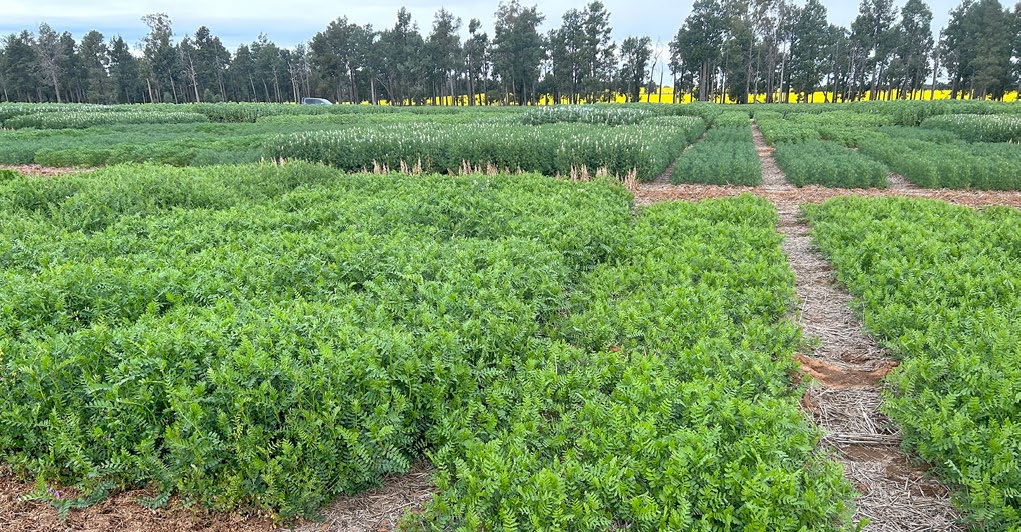
Trial details
This trial was conducted to compare the grain yield of faba bean, lupin and vetch varieties at two sowing
dates (see Table 1), and also nitrogen fixation and removal. This will enable an economic value to be placed on harvested grain plus residual nitrogen. The nitrogen fixation analysis is yet to be completed.

2023.
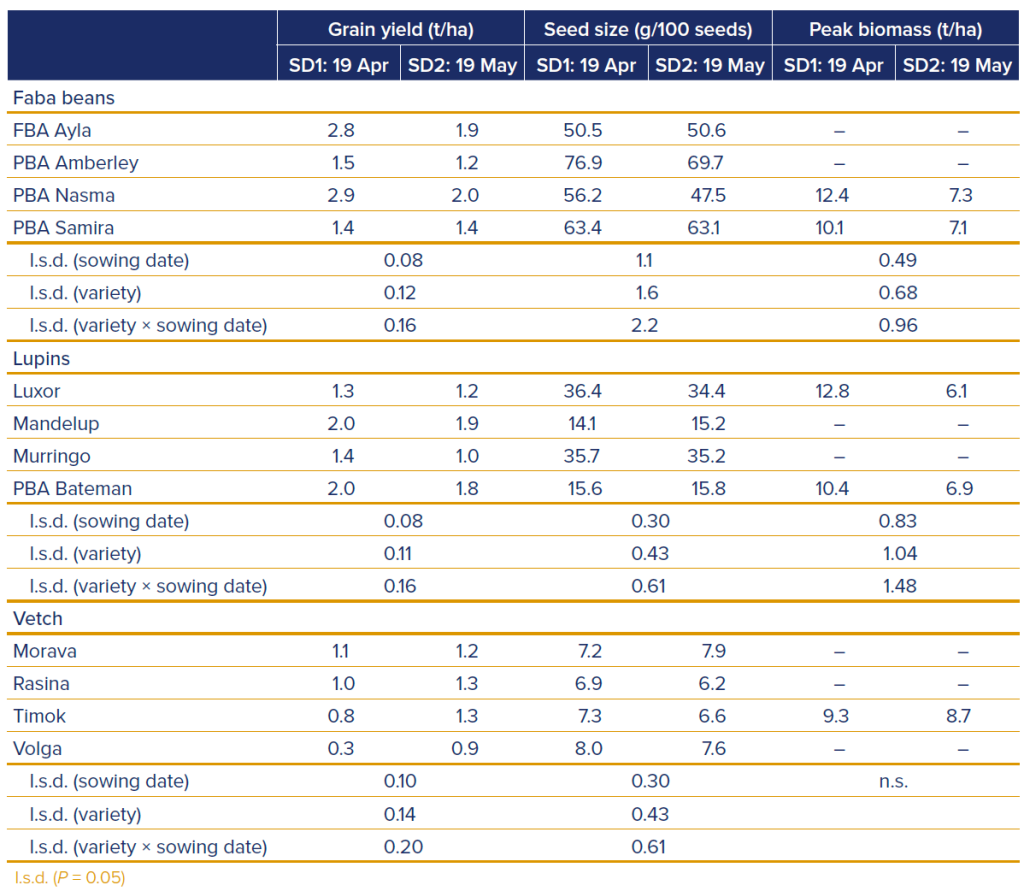
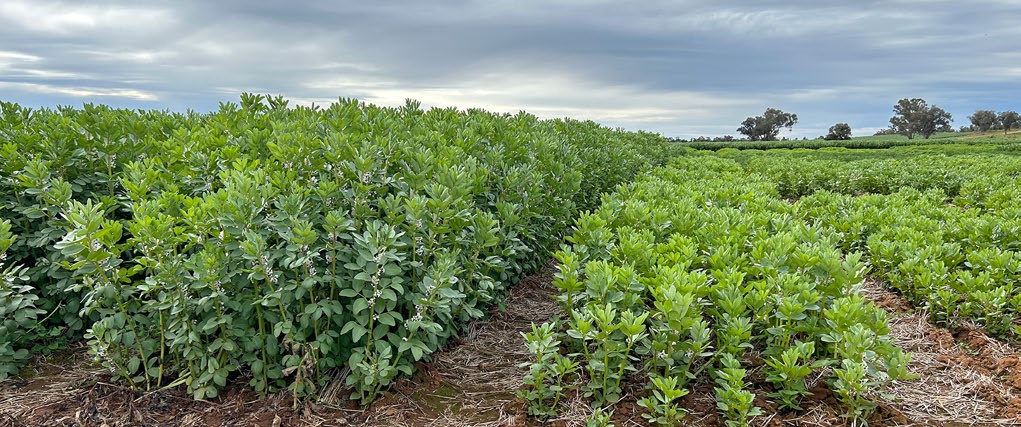
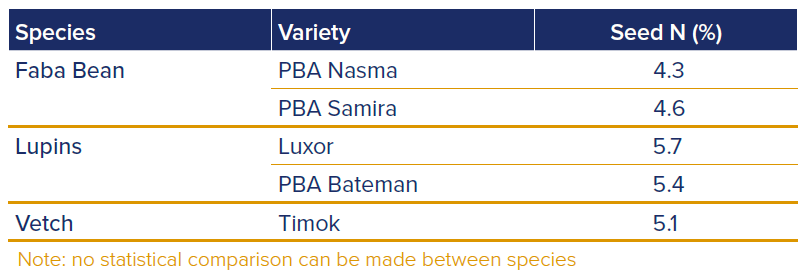
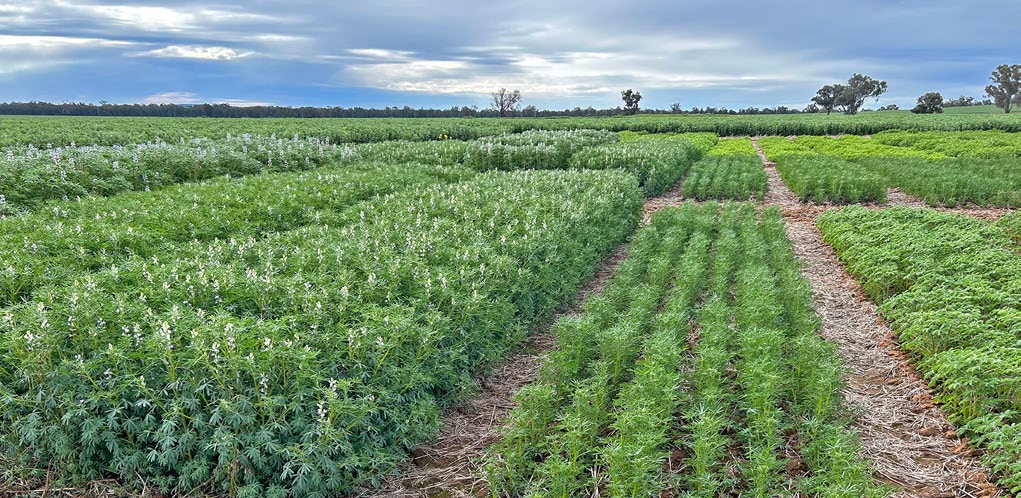
Chickpea and field pea variety comparison
Key findings
Chickpeas
- There were only small differences in grain yield between the chickpea varieties with CBA Captain and PBA Slasher the highest at 1.7 t/ha, and PBA HatTrick and PBA Seamer the lowest at 1.5 t/ha.
- CBA Captain produced the largest seed (24.2 g/100 seeds), while PBA HatTrick and PBA Slasher had the smallest (22.4 g/100 seeds).
- The application of nitrogen (N) early post-emergent (100 kg N/ha as urea) did not increase grain yield of CBA CaptainA but did increase peak biomass from 6.4 to 7.3 t/ha, and seed N concentration from 3.5 to 3.8%.
Field peas
- APB Bondi was the highest yielding variety at 1.9 t/ha and Sturt the lowest at 1.1 t/ha.
- Seed size was correlated to grain yield, with APB Bondi the largest (17.6 g/100 seeds) and Sturt the smallest (15.2 g/100 seeds).
- The application of N early post-emergent (100 kg N/ha as urea) to PBA Butler did not increase grain yield, peak biomass nor seed N concentration.
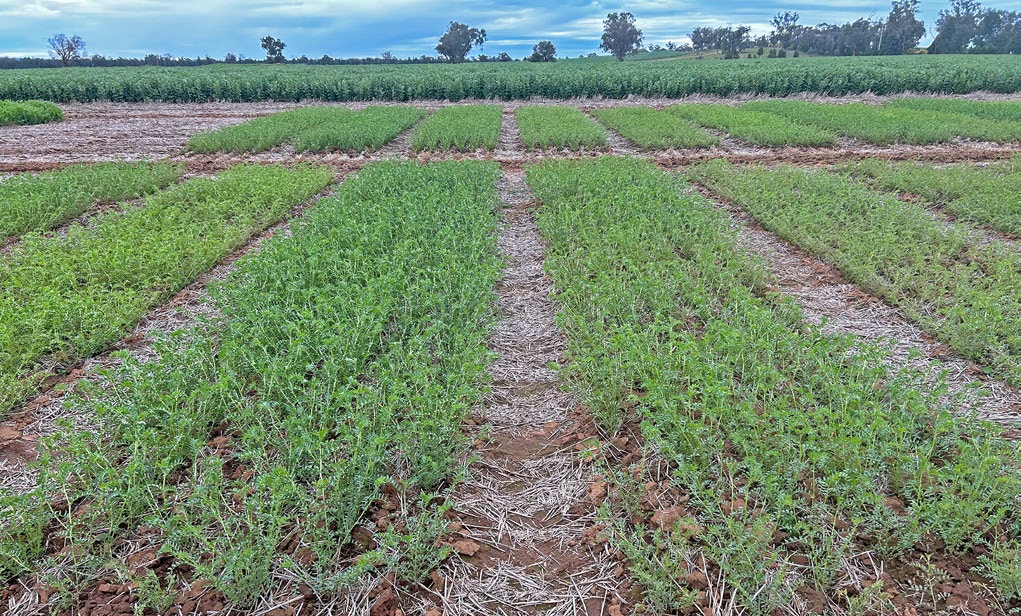
Trial details
Separate chickpea and field pea variety comparison trials were conducted at Caragabal in 2023 to
determine suitability of the species and varieties to the region. Nitrogen (100 kg N/ha, as urea) was applied early post-emergent (3 June) to CBA CaptainA chickpeas and PBA ButlerA field peas to determine how background soil nitrogen levels influence pulse nitrogen fixation. The samples for nitrogen fixation are yet to be analysed.

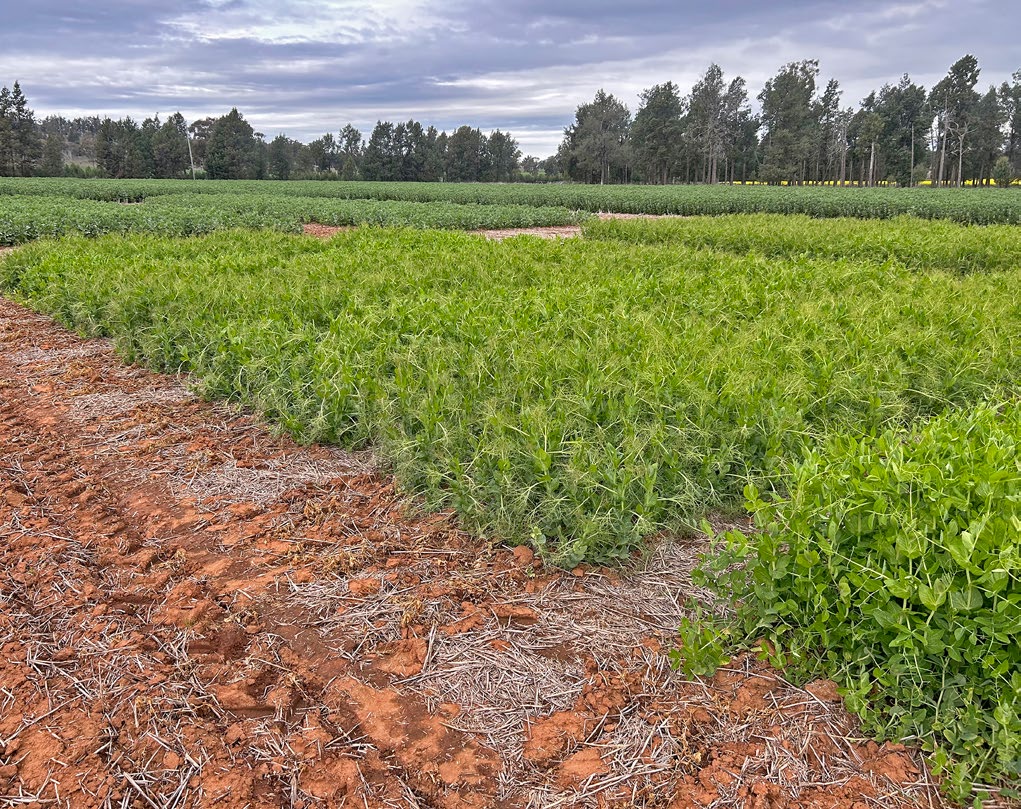
Results
